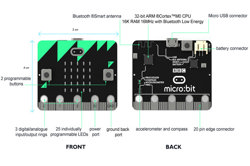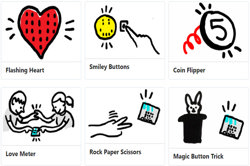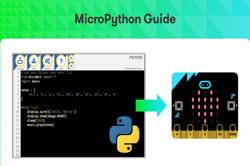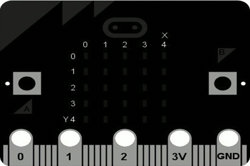DT Challenge - 7/8 Javascript - Cookie Clicker
Learn how to make interactive webpages and build a surprisingly addictive game! In this DT Challenge, you'll learn the web technologies that form the foundations of the internet.
In this course you'll learn the basics of HTML, CSS and JavaScript! You'll build webpages using text and images, and learn how to make them interactive as you add more complex UI elements.
So get your clicking fingers ready, and watch out how that cookie crumbles!
To do the challenge offline use this guide to support students.
Additional details
| Year band(s) | 7-8 |
|---|---|
| Content type | Tools for learning, Student challenges |
| Format | Interactive |
| Core and overarching concepts | Implementation (programming), Computational thinking |
| Australian Curriculum Digital Technologies code(s) |
AC9TDI8P07
Design the user experience of a digital system
AC9TDI8P08
Generate, modify, communicate and evaluate alternative designs
AC9TDI8P09
Implement, modify and debug programs involving control structures and functions in a general-purpose programming language |
| Technologies & Programming Languages | JavaScript JS |
| Keywords | Data: Collection, Representation, Interpretation, Specification, Algorithms, Adaptations, Science, Branching, Interaction, Input, Output, Australian Computing Academy, JavaScript, HTML, CSS, DT Challenge |
| Organisation | Australian Computing Academy |
| Copyright | University of Sydney. Creative Commons BY 4.0. |
Related resources
-

Features of the micro:bit!
Learn about the micro:bit.features.
-

Micro:bit projects
Check out these projects that you can build with your micro:bit.
-

micro:bit Tutorial Series Part 1: Getting Started
In this episode, we examine the micro:bit and program it to scroll the phrase "Hello!" across the LED display.
-

The MicroPython guide to BBC micro:bit
Use this guide to learn about using the micro:bit with BBC's online MicroPython code editor.
-

BBC micro:bit MicroPython documentation
The BBC micro:bit is a small computing device. One of the languages it understands is the popular Python programming language. The version of Python that runs on the BBC micro:bit is called MicroPython. This documentation includes lessons for teachers and API documentation for developers.
-

DT Challenge - 7/8 Arduino - Sound
-

DT Challenge - 7/8 Python - Chatbot
Write code to create word games and develop a Pirate Chatbot. Arrr, me hearties!
-

DT Challenge - 7/8 Blockly - Geometry
Explore geometry through programming, and draw intricate patterns and explosive fireworks!
